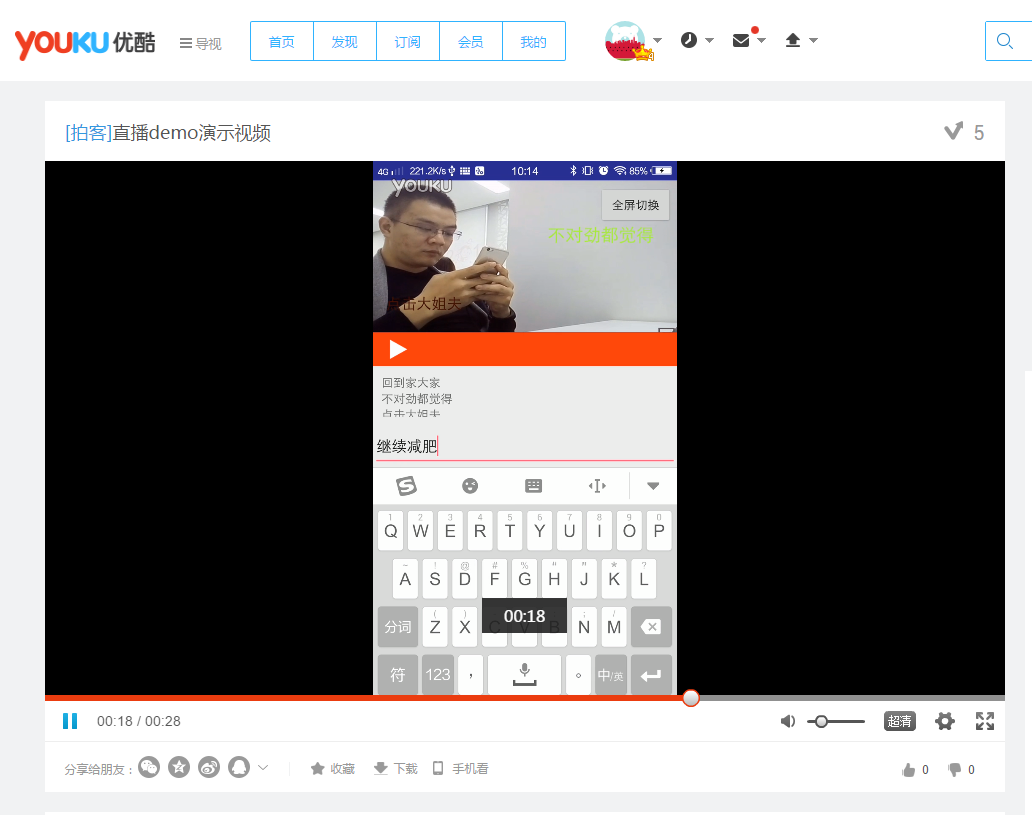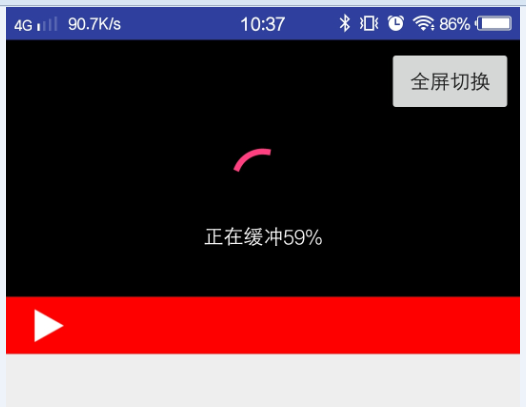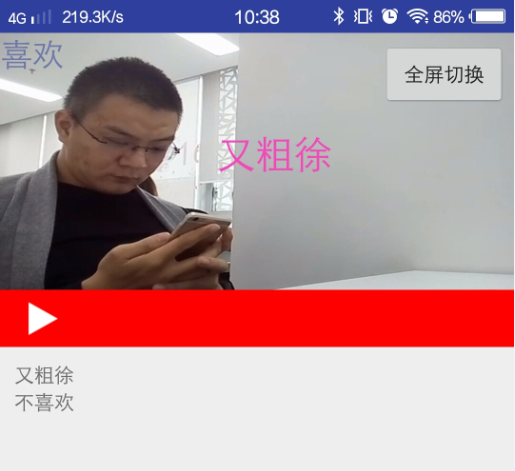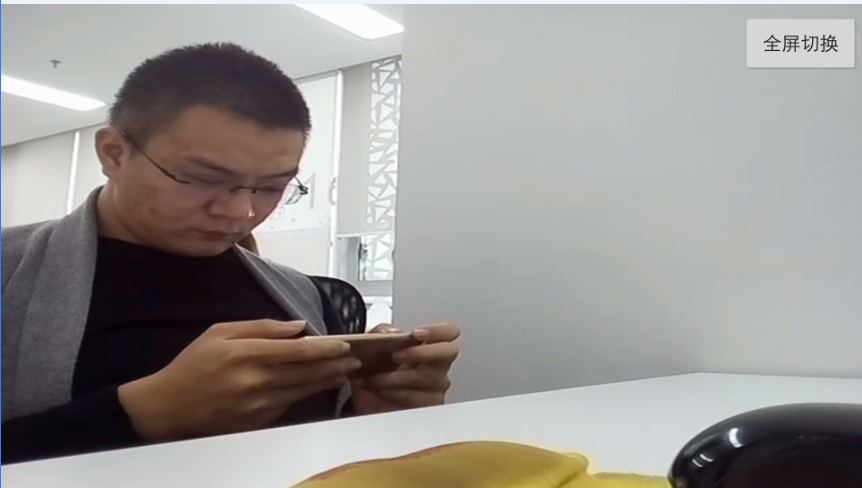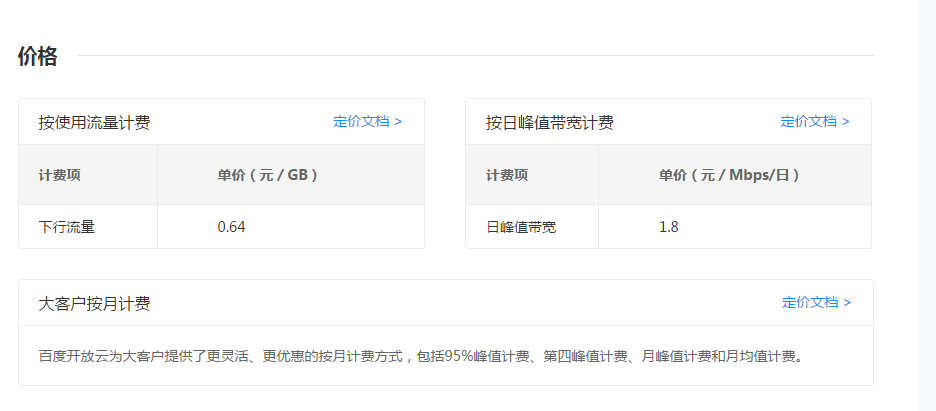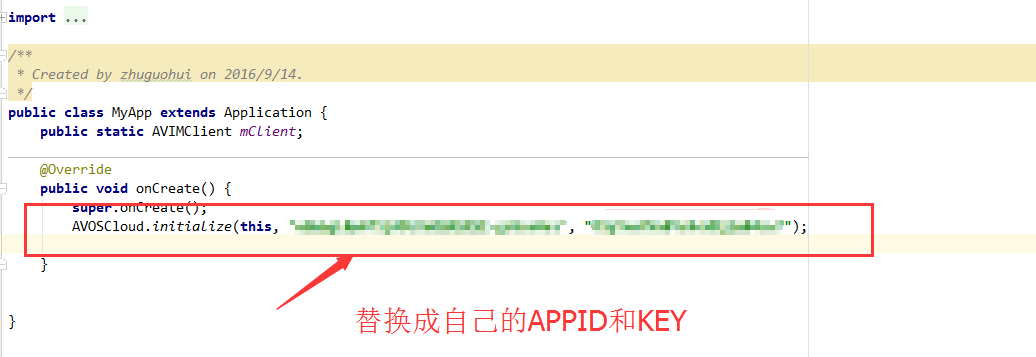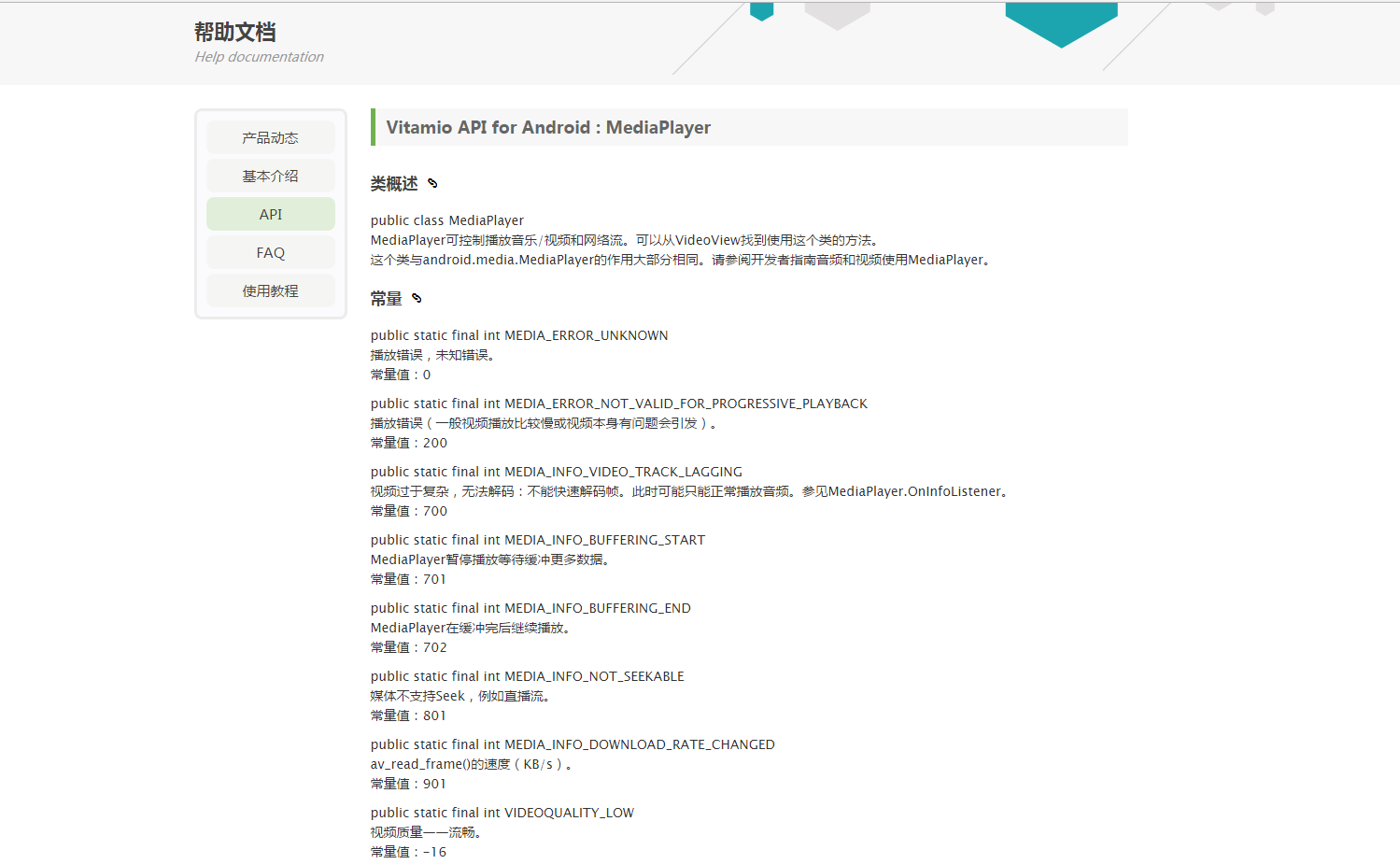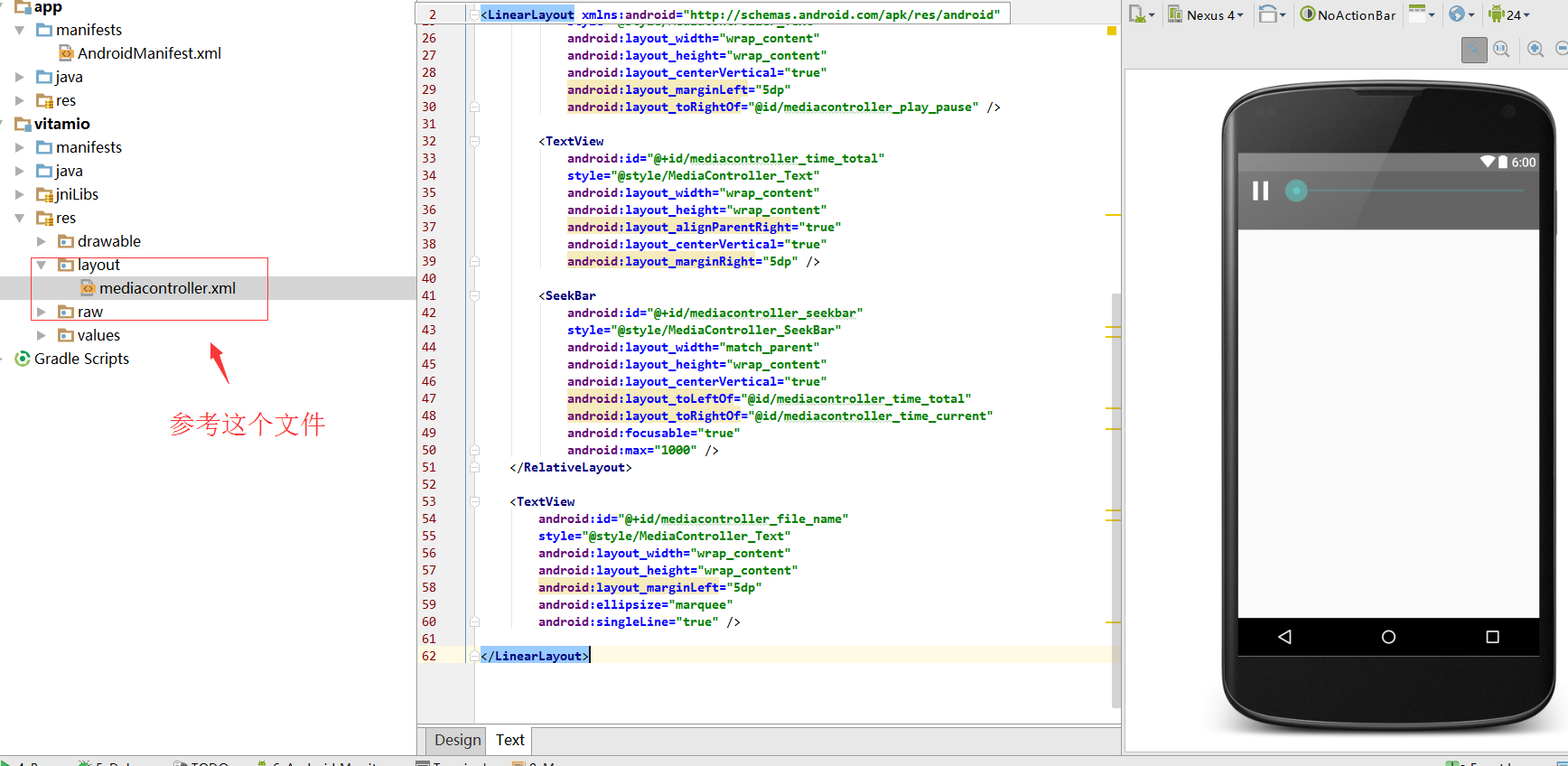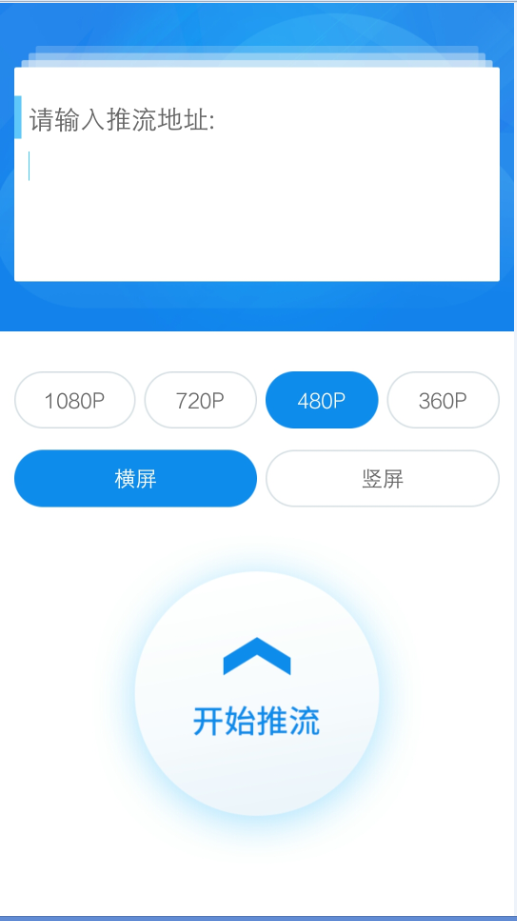一步一步實現直播和彈幕
序言
最近在研究直播的彈幕,東西有點多,準備記錄一下免得自己忘了又要重新研究,也幫助有這方面需要的同學少走點彎路。關於直播的技術細節其實就是兩個方面一個是推流一個是拉流,而彈幕的實現核心在即時聊天,使用聊天室的就能實現,只是訊息的展示方式不同而已。在大多數的專案中還是使用第三方的直播平臺實現推流功能,因此關於直播平臺的選擇也是至關重要。下面由我娓娓道來。
效果
為了演示方便我把螢幕錄影上傳到優酷了,這是視訊地址
功能
1.緩衝進度
2.彈幕
3.橫豎屏切換
實現
1.直播SDK的選擇
提供直播功能的廠商有很多,比如七牛雲,樂視,百度雲,騰訊雲,金山雲,等等。功能也大同小異,常見的縮圖,視訊錄製,轉碼,都可以實現。但是對於SDK的易用程度還是不敢恭維的。下面我說說我遇到的一些問題。
1.樂視
優點:
樂視直播的註冊流程還是很方便的,選擇個人開發者,然後驗證身份資訊就可以使用了,每人每月免費10GB的流量。
缺點
最大的缺點就是穩定性,至少在我測試的時候也就是2016年9月份穩定性很差,不是說視訊的穩定性,而是推流的穩定性,我有一臺在同樣的網路下我的ViVO X7能推流,但是魅藍NOTE2不能推流。然而ViVO X7推出去的流在電腦上用VLC能播放,在其他手機上顯示黑屏,既不報錯也沒畫面。隨後使用同樣的網路,同樣的魅藍NOTE2,百度的SDK就能推流。看來樂視的直播技術方面還有待改進,直接pass。
2.七牛雲
優點
態度好,服務周到,其他方面的不能再評價了,因為沒有真正使用過,這的確很尷尬,不過態度的確很好,會有客服打電話過來詢問需求,會有技術支援人員主動溝通,這是很值得肯定的。
缺點
倒不能算是缺點,可能算特點吧,七牛雲需要使用域名別名解析來做RTMP直播流域名,也就是說你要使用七牛雲必須要有一個備案過的域名,由於我司的域名我不能輕易去改,而且我也沒有備案過的域名,所以不能測試。
3.騰訊雲
還沒有通過稽核,效率太低。
4.阿里雲
也需要域名,跳過。
5.百度雲
優點
稽核速度挺快的,實名認證大概15分鐘搞定(這是我的速度,僅供參考),不需要域名,為個人開發者免費提供10G流量測試,這點很良心。而且功能很全面,推流很簡單。下面是價格表:
缺點
企業使用者需要認證,否則單月最大流量為1TB,個人使用者總流量限制在1000GB。
經過以上對比最終選擇了百度雲來實現直播。
2.及時聊天SDK的選擇
這裡邊倒沒有太多的考慮,環信,融雲,LeanCloud都可以,但是長期使用leancloud發現其文件質量很高,SDK簡單易用。所以使用了LeanCloud來實現即時通訊。
3.彈幕實現
彈幕說白了就是聊天室,只是聊天室的訊息需要在視訊節目上顯示而已,所以首先要實現一個聊天室,此處使用LeanCloud實現。
第一步:初始化
第二步:登入
package com.zgh.livedemo;
import android.content.Intent;
import android.os.Bundle;
import android.support.v7.app.AppCompatActivity;
import android.text.TextUtils;
import android.view.View;
import android.widget.EditText;
import android.widget.Toast;
import com.avos.avoscloud.im.v2.AVIMClient;
import com.avos.avoscloud.im.v2.AVIMException;
import com.avos.avoscloud.im.v2.callback.AVIMClientCallback;
public class LoginActivity extends AppCompatActivity {
EditText et_name;
@Override
protected void onCreate(Bundle savedInstanceState) {
super.onCreate(savedInstanceState);
setContentView(R.layout.activity_login);
et_name = (EditText) findViewById(R.id.et_name);
findViewById(R.id.btn_login).setOnClickListener(new View.OnClickListener() {
@Override
public void onClick(View v) {
String name = et_name.getText().toString();
if (TextUtils.isEmpty(name)) {
Toast.makeText(LoginActivity.this, "登入名不能為空", Toast.LENGTH_SHORT).show();
return;
}
login(name);
}
});
}
public void login(String name) {
//使用name作為cliendID
AVIMClient jerry = AVIMClient.getInstance(name);
jerry.open(new AVIMClientCallback() {
@Override
public void done(AVIMClient client, AVIMException e) {
if (e == null) {
Toast.makeText(LoginActivity.this, "登入成功", Toast.LENGTH_SHORT).show();
//儲存client
MyApp.mClient = client;
startActivity(new Intent(LoginActivity.this, MainActivity.class));
} else {
Toast.makeText(LoginActivity.this, "登入失敗:" + e.getMessage(), Toast.LENGTH_SHORT).show();
}
}
});
}
}第三步,進入聊天室
在進入直播介面的時候呼叫此方法,進入聊天室。conversationId應該從伺服器獲取,此處用於測試使用了一個固定的ID。
private void join() {
MyApp.mClient.open(new AVIMClientCallback() {
@Override
public void done(AVIMClient client, AVIMException e) {
if (e == null) {
//登入成功
conv = client.getConversation("57d8b2445bbb50005e420535");
conv.join(new AVIMConversationCallback() {
@Override
public void done(AVIMException e) {
if (e == null) {
//加入成功
Toast.makeText(MainActivity.this, "加入聊天室成功", Toast.LENGTH_SHORT).show();
et_send.setEnabled(true);
} else {
Toast.makeText(MainActivity.this, "加入聊天室失敗:" + e.getMessage(), Toast.LENGTH_SHORT).show();
et_send.setEnabled(false);
android.util.Log.i("zzz", "加入聊天室失敗 :" + e.getMessage());
}
}
});
}
}
});
}登入成功以後,在onResum的時候將此Activity註冊為訊息處理者,在onPause的時候取消註冊。而在application的onCreate的時候註冊一個預設的處理器,也就是說當APP在後頭執行的時候,通過預設處理器處理訊息,即彈出狀態列彈出通知,而在聊天介面由當前介面處理訊息。
@Override
protected void onResume() {
super.onResume();
AVIMMessageManager.registerMessageHandler(AVIMTextMessage.class, roomMessageHandler);
}
@Override
protected void onPause() {
super.onPause();
AVIMMessageManager.unregisterMessageHandler(AVIMTextMessage.class, roomMessageHandler);
}
在接收到訊息以後把訊息顯示在彈幕控制元件上。
public class RoomMessageHandler extends AVIMMessageHandler {
//接收到訊息後的處理邏輯
@Override
public void onMessage(AVIMMessage message, AVIMConversation conversation, AVIMClient client) {
if (message instanceof AVIMTextMessage) {
String info = ((AVIMTextMessage) message).getText();
//新增訊息到螢幕
addMsg(info);
}
}
}
private void addMsg(String msg) {
TextView textView = new TextView(MainActivity.this);
textView.setText(msg);
ViewGroup.MarginLayoutParams params = new ViewGroup.MarginLayoutParams(ViewGroup.LayoutParams.WRAP_CONTENT, ViewGroup.LayoutParams.WRAP_CONTENT);
params.setMargins(5, 10, 5, 10);
textView.setLayoutParams(params);
ll_room.addView(textView, 0);
barrageView.addMessage(msg);
}彈幕的控制元件
package com.zgh.livedemo.view;
import android.content.Context;
import android.graphics.Color;
import android.graphics.Rect;
import android.os.Handler;
import android.os.Message;
import android.text.TextPaint;
import android.util.AttributeSet;
import android.view.animation.AccelerateDecelerateInterpolator;
import android.view.animation.Animation;
import android.view.animation.TranslateAnimation;
import android.widget.RelativeLayout;
import android.widget.TextView;
import java.util.ArrayList;
import java.util.List;
import java.util.Random;
/**
* Created by lixueyong on 16/2/19.
*/
public class BarrageView extends RelativeLayout {
private Context mContext;
private BarrageHandler mHandler = new BarrageHandler();
private Random random = new Random(System.currentTimeMillis());
private static final long BARRAGE_GAP_MIN_DURATION = 1000;//兩個彈幕的最小間隔時間
private static final long BARRAGE_GAP_MAX_DURATION = 2000;//兩個彈幕的最大間隔時間
private int maxSpeed = 10000;//速度,ms
private int minSpeed = 5000;//速度,ms
private int maxSize = 30;//文字大小,dp
private int minSize = 15;//文字大小,dp
private int totalHeight = 0;
private int lineHeight = 0;//每一行彈幕的高度
private int totalLine = 0;//彈幕的行數
private List<String> messageList = new ArrayList<>();
// private String[] itemText = {"是否需要幫忙", "what are you 弄啥來", "哈哈哈哈哈哈哈", "搶佔沙發。。。。。。", "************", "是否需要幫忙",
// "我不會輕易的狗帶", "嘿嘿", "這是我見過的最長長長長長長長長長長長的評論"};
private int textCount;
// private List<BarrageItem> itemList = new ArrayList<BarrageItem>();
public BarrageView(Context context) {
this(context, null);
}
public BarrageView(Context context, AttributeSet attrs) {
this(context, attrs, 0);
}
public BarrageView(Context context, AttributeSet attrs, int defStyleAttr) {
super(context, attrs, defStyleAttr);
mContext = context;
init();
}
private void init() {
// textCount = itemText.length;
int duration = (int) ((BARRAGE_GAP_MAX_DURATION - BARRAGE_GAP_MIN_DURATION) * Math.random());
mHandler.sendEmptyMessageDelayed(0, duration);
}
public void addMessage(String message) {
messageList.add(message);
}
@Override
public void onWindowFocusChanged(boolean hasWindowFocus) {
super.onWindowFocusChanged(hasWindowFocus);
totalHeight = getMeasuredHeight();
lineHeight = getLineHeight();
totalLine = totalHeight / lineHeight;
}
private void generateItem() {
if (messageList.size() > 0) {
BarrageItem item = new BarrageItem();
String tx = messageList.remove(0);
int sz = (int) (minSize + (maxSize - minSize) * Math.random());
item.textView = new TextView(mContext);
item.textView.setText(tx);
item.textView.setTextSize(sz);
item.textView.setTextColor(Color.rgb(random.nextInt(256), random.nextInt(256), random.nextInt(256)));
item.textMeasuredWidth = (int) getTextWidth(item, tx, sz);
item.moveSpeed = (int) (minSpeed + (maxSpeed - minSpeed) * Math.random());
if (totalLine == 0) {
totalHeight = getMeasuredHeight();
lineHeight = getLineHeight();
totalLine = totalHeight / lineHeight;
}
item.verticalPos = random.nextInt(totalLine) * lineHeight;
// itemList.add(item);
showBarrageItem(item);
}
}
private void showBarrageItem(final BarrageItem item) {
int leftMargin = this.getRight() - this.getLeft() - this.getPaddingLeft();
LayoutParams params = new LayoutParams(LayoutParams.WRAP_CONTENT, LayoutParams.WRAP_CONTENT);
params.addRule(RelativeLayout.ALIGN_PARENT_TOP);
params.topMargin = item.verticalPos;
this.addView(item.textView, params);
Animation anim = generateTranslateAnim(item, leftMargin);
anim.setAnimationListener(new Animation.AnimationListener() {
@Override
public void onAnimationStart(Animation animation) {
}
@Override
public void onAnimationEnd(Animation animation) {
item.textView.clearAnimation();
BarrageView.this.removeView(item.textView);
}
@Override
public void onAnimationRepeat(Animation animation) {
}
});
item.textView.startAnimation(anim);
}
private TranslateAnimation generateTranslateAnim(BarrageItem item, int leftMargin) {
TranslateAnimation anim = new TranslateAnimation(leftMargin, -item.textMeasuredWidth, 0, 0);
anim.setDuration(item.moveSpeed);
anim.setInterpolator(new AccelerateDecelerateInterpolator());
anim.setFillAfter(true);
return anim;
}
/**
* 計算TextView中字串的長度
*
* @param text 要計算的字串
* @param Size 字型大小
* @return TextView中字串的長度
*/
public float getTextWidth(BarrageItem item, String text, float Size) {
Rect bounds = new Rect();
TextPaint paint;
paint = item.textView.getPaint();
paint.getTextBounds(text, 0, text.length(), bounds);
return bounds.width();
}
/**
* 獲得每一行彈幕的最大高度
*
* @return
*/
private int getLineHeight() {
/* BarrageItem item = new BarrageItem();
String tx = itemText[0];
item.textView = new TextView(mContext);
item.textView.setText(tx);
item.textView.setTextSize(maxSize);
Rect bounds = new Rect();
TextPaint paint;
paint = item.textView.getPaint();
paint.getTextBounds(tx, 0, tx.length(), bounds);
return bounds.height();*/
return 50;
}
class BarrageHandler extends Handler {
@Override
public void handleMessage(Message msg) {
super.handleMessage(msg);
generateItem();
//每個彈幕產生的間隔時間隨機
int duration = (int) ((BARRAGE_GAP_MAX_DURATION - BARRAGE_GAP_MIN_DURATION) * Math.random());
this.sendEmptyMessageDelayed(0, duration);
}
}
}剩下的細節看demo吧。
4.視訊播放
視訊的播放使用的是vitamio框架關於具體的API請參考這裡這裡
需要注意的是在狀態的獲取,通過設定不同的監聽來實現的。
mVideoView.setOnInfoListener(new MediaPlayer.OnInfoListener() {
public boolean onInfo(MediaPlayer mp, int what, int extra) {
//緩衝開始
if (what == MediaPlayer.MEDIA_INFO_BUFFERING_START) {
layout_loading.setVisibility(View.VISIBLE);
android.util.Log.i("zzz", "onStart");
//緩衝結束
} else if (what == MediaPlayer.MEDIA_INFO_BUFFERING_END) {
//此介面每次回撥完START就回調END,若不加上判斷就會出現緩衝圖示一閃一閃的卡頓現象
android.util.Log.i("zzz", "onEnd");
layout_loading.setVisibility(View.GONE);
// mp.start();
mVideoView.start();
}
return true;
}
});
//獲取快取百分比
mVideoView.setOnBufferingUpdateListener(new MediaPlayer.OnBufferingUpdateListener() {
@Override
public void onBufferingUpdate(MediaPlayer mp, int percent) {
if(!mp.isPlaying()) {
layout_loading.setVisibility(View.VISIBLE);
tv_present.setText("正在緩衝" + percent + "%");
}else{
layout_loading.setVisibility(View.GONE);
}
}
});
mVideoView.setOnPreparedListener(new MediaPlayer.OnPreparedListener() {
@Override
public void onPrepared(MediaPlayer mediaPlayer) {
mediaPlayer.setPlaybackSpeed(1.0f);
}
});
//出錯處理
mVideoView.setOnErrorListener(new MediaPlayer.OnErrorListener() {
@Override
public boolean onError(MediaPlayer mp, int what, int extra) {
tv_present.setText("載入失敗");
return true;
}
});還有就是MediaController的使用,可以參考農民伯伯的vitamio中文API
需要注意的是在xml中使用MediaController時需要這樣使用位置為VideoView之上,高度為需要顯示的控制條的高度,內部需要包括控制控制元件,id必須為指定的ID,佈局可以參考原始碼中這個檔案
<io.vov.vitamio.widget.MediaController
android:id="@+id/mediacontroller"
android:layout_width="match_parent"
android:layout_height="40dp"
android:layout_alignParentBottom="true"
android:background="#ff0000">
<RelativeLayout
android:layout_width="match_parent"
android:layout_height="wrap_content"
android:orientation="horizontal">
<ImageButton
android:id="@+id/mediacontroller_play_pause"
android:layout_width="wrap_content"
android:layout_height="wrap_content"
android:layout_centerVertical="true"
android:layout_marginLeft="5dp"
android:background="@drawable/mediacontroller_button"
android:contentDescription="@string/mediacontroller_play_pause"
android:src="@drawable/mediacontroller_pause" />
</RelativeLayout>
</io.vov.vitamio.widget.MediaController>5.視訊的全屏模式
其核心的邏輯是點選按鈕,改變螢幕方向,在改變方向的時候隱藏聊天室,輸入框等。同時改變控制元件的大小。要讓Activity在螢幕切換的時候不重新建立需要新增這個選項。
android:configChanges="keyboardHidden|orientation|screenSize"核心程式碼
private void fullScreen() {
if (isScreenOriatationPortrait(this)) {// 當螢幕是豎屏時
full(true);
// 點選後變橫屏
setRequestedOrientation(ActivityInfo.SCREEN_ORIENTATION_LANDSCAPE);
// 設定當前activity為橫屏
// 當橫屏時 把除了視訊以外的都隱藏
//隱藏其他元件的程式碼
ll_room.setVisibility(View.GONE);
et_send.setVisibility(View.GONE);
int width=getResources().getDisplayMetrics().widthPixels;
int height=getResources().getDisplayMetrics().heightPixels;
layout_video.setLayoutParams(new LinearLayout.LayoutParams(height, width));
mVideoView.setLayoutParams(new RelativeLayout.LayoutParams(height,width));
} else {
full(false);
setRequestedOrientation(ActivityInfo.SCREEN_ORIENTATION_PORTRAIT);// 設定當前activity為豎屏
//顯示其他元件
ll_room.setVisibility(View.VISIBLE);
et_send.setVisibility(View.VISIBLE);
int width=getResources().getDisplayMetrics().heightPixels;
int height= (int) (width*9.0/16);
layout_video.setLayoutParams(new LinearLayout.LayoutParams(width, height));
mVideoView.setLayoutParams(new RelativeLayout.LayoutParams(width,height));
}
}
//動態隱藏狀態列
private void full(boolean enable) {
if (enable) {
WindowManager.LayoutParams lp = getWindow().getAttributes();
lp.flags |= WindowManager.LayoutParams.FLAG_FULLSCREEN;
getWindow().setAttributes(lp);
getWindow().addFlags(WindowManager.LayoutParams.FLAG_LAYOUT_NO_LIMITS);
} else {
WindowManager.LayoutParams attr = getWindow().getAttributes();
attr.flags &= (~WindowManager.LayoutParams.FLAG_FULLSCREEN);
getWindow().setAttributes(attr);
getWindow().clearFlags(WindowManager.LayoutParams.FLAG_LAYOUT_NO_LIMITS);
}
}
Demo
關於demo中的配置資訊,我抽取到相關的config介面中了,大家只需要配置好就行了
package com.zgh.livedemo;
/**
* Created by zhuguohui on 2016/9/20.
*/
public interface Config {
/**
* learnCloud APP_ID
*/
String APP_ID = "";
/**
* learnCloud APP_KEY
*/
String APP_KEY = "";
/**
* learnCloud 聊天室ID
*/
String CONVERSATION_ID = "";
/**
* rtmp 視訊地址
*/
String VIDEO_URL = "";
}
關於推流用的是百度直播SDK的官方的Demo

